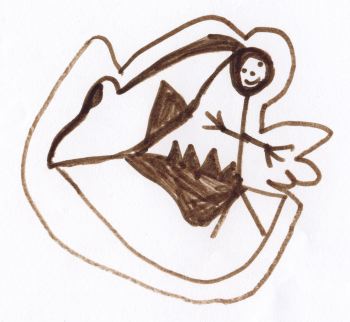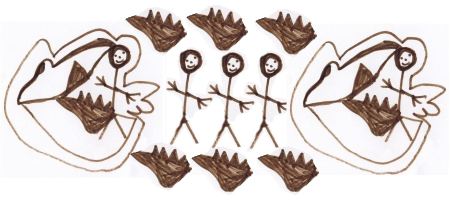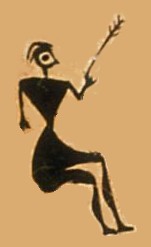Posted by Angela Ferreira on March 20th, 2007

Title: Scrying
Medium: Pencil & Oil on canvas
Size: 140 x 78 cm
This painting was made with a technique I have discovered by reading posts from both Karl Zipser’s and Hanneke’s methods.
I have drawn directly from a combination of life and imagination on to the canvas, shading to some extent and completing it mostly.
When the drawing was absolutely right, then I covered the picture with thin layers of oil mixed with diluents to show some of the transparencies.
I finally overworked to the top leaving some parts of the pencil showing through and some other parts built up with colour and tone.

Posted by Bob Martin on March 1st, 2007
Artist at times have a choice between telling the honest to goodness truth or in-creditable lies. This painting (wp) is the truth as I experienced it. It is also a story that is not often featured in any media.

Posted by Bob Martin on February 22nd, 2007
I’ve always had this interest in how I might be able to tell a story in my paintings, without having to layout every detail.

This painting is a “work in progress” and for me it’s about distance. The two figures have adopted the same stance and maybe for different reason. Because they appear to be in the same location/room, they are together. I will find out what they are about as I continue to paint. Figuring out the story is one of the most enjoyable parts of painting for me.
Posted by Angela Ferreira on February 11th, 2007
Are quick drawings and paintings artworks or just studies? Are they value at all?
A lot of drawings of old masters have an immense value nowadays but looking at contemporary artists drawings, are they such important?
Why don’t contemporary artists exhibit mostly their drawings and experiments, just their final masterpieces?

Scrying – pencil and chalk, quick drawing on paper

Drawing from imagination, pencil on paper

Spiritual, Mixed media on paper
Posted by Birgit Zipser on February 9th, 2007
David’s Self-Portrait with Raven reminded me of this picture of a black bird that I carried in my mind: 
more… »
Posted by Angela Ferreira on February 4th, 2007

Title: Paradise Garden
Medium: Oil on canvas
Size: 100×76 cm
Posted by Karl Zipser on February 1st, 2007

Painting
From Life vs.
From Photos

Detail from funeral pyre scene on an Attic Geometric krater, second half of 8th century BC

Man being eaten by a crocodile, first half of 21st century AD
The ceramic painting above I borrowed from Victor Bryant’s excellent ceramics website. The drawing on paper is by Fran, who is almost five years old.
The images are similar in that they both depict narrative scenes, and both make use of simple geometric shapes. The vase painting probably represents top quality artwork of its era, making use of a consistent representational system which covers this large vase and many others (presumably painted by many different adults working over many years). The children’s drawing is a one-of-a-kind sketch.
At first glance, the vase painting seems like children’s art made by adults. A key factor that distinguishes the adult work is the consistent repetition of patterns — across the detail, across the vase and across the historical period. There is a discipline here that is alien to the work of a child drawing as play. This use of repetition has substantial advantages. It imparts rhythm and complexity to the work that is lacking in Fran’s image. Repetition creates a decorative effect that masks to some degree the simplicity of the representation. For the sake of comparison, we can apply repetition to Fran’s image:

We can also isolate a figure from the vase painting. With these simple digital manipulation we have not transformed Fran into an Attic geometric vase painter, or turned the vase painter into a child. We have, I think, narrowed the gap.

What I think is interesting here is that what presumably passed for fine work in the 8th century BC probably could be made by children, if they were compelled to work within a disciplined productive system (as the adults were).
Discipline and rigid compliance to style are factors that are quite contrary to our modern notions of art, however. Is the ancient vase painting art, or is it nothing more than systematized children’s decoration?













